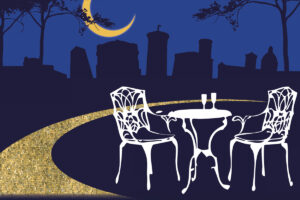As in much of Europe, from the first decades of the Middle Ages a number of monasteries began to spring up around Ravenna’s walls, which over time became a characteristic feature of the city.
One of these is undoubtedly the Benedictine monastery of San Vitale, today in part housing the collections of the National Museum, located in Via San Vitale.
Only a few sections of the cloister walls remain as evidence of the presence of the oldest buildings, which appear to have been incorporated into later reconstructions. There is no certain data regarding the date of foundation of the monastery, although it is assumed that this took place during the tenth century.
Throughout the Middle Ages and in the centuries to come, the monastery of San Vitale benefited from the protection of the archbishops of Ravenna, popes and emperors, who enriched its heritage.
In spite of this, in the thirteenth century the community of monks experienced a crisis from which it was never able to fully recover.
At the Basilica of Sant’Apollinare Nuovo, on the other hand, a sixteenth-century cloister is visible, which was undoubtedly once part of a monastery, the foundation of which dates back to 973 and was commissioned by Petrus dux et comes who, with a donation, entrusted the place to the Benedictine rule.
Over the centuries, the monastery grew rich thanks to donations and concessions of goods until the sixteenth century, when the Benedictine community that ran it fell into decline and was replaced by the Friars Minor Observant who moved in after the Battle of Ravenna in 1512.
This battle is also linked to the history of the construction of the former monastery of Classe, so called even though it is located in the city, as the monks of Sant’Apollinare in Classe moved there after the terrible battles to be more secure within the city walls.
The monastery of San Nicolò, dating from the second half of the thirteenth century and built to house the community of Augustinian hermits, is also to be found in the historic centre.
As in the other cases, San Nicolò also underwent several reconstructions over the centuries, which gradually led to the current situation in which the monastery buildings now house the Museo Tamo – Tutta l’Avventura del Mosaico (Tamo Museum – All the Mosaic Adventure).
The Convent of San Francesco, situated next to the basilica of the same name in the historic centre, was only so named after the Franciscan friars moved in 1261. It was originally a basilica, built around the middle of the fifth century AD, first dedicated to the Apostles and later to Saint Peter Major.
Of the original convent, the Renaissance cloisters are still preserved today. The sixteenth-century cloister, which leads to the Museo Dantesco, was once also connected to Dante’s tomb, as the Franciscans were its guardians.






